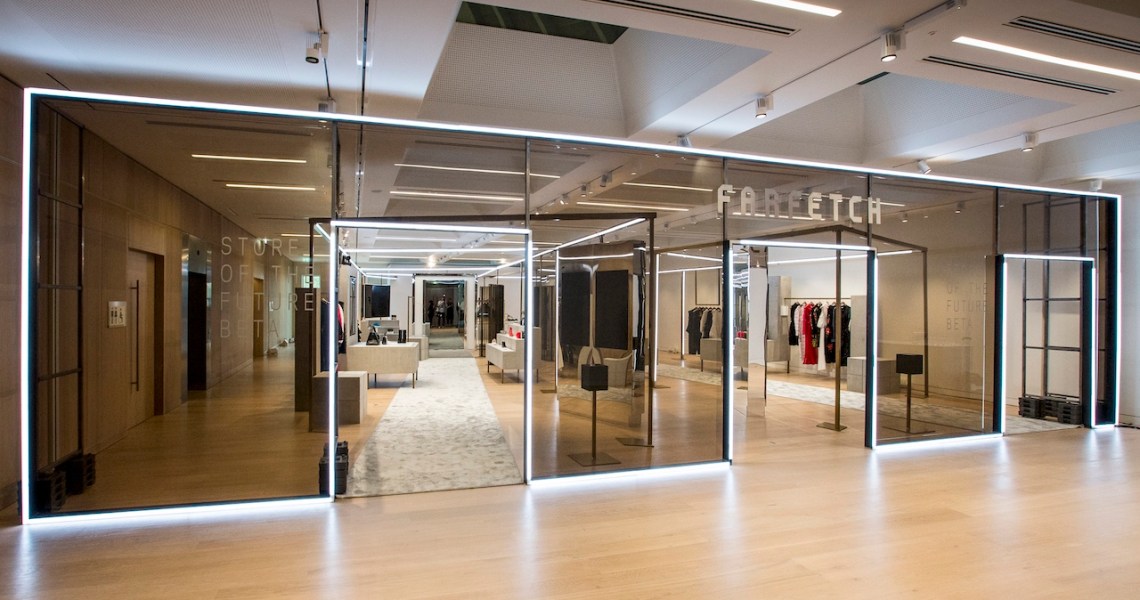Farfetch may not be acquiring Barneys, as a report in the New York Post recently reported, but it has been on a buying streak — and its acquisitions may prove more trouble than they’re worth.
Earlier this month, Farfetch bought New Guards, which owns the license to popular streetwear brands Off-White and Heron Preston. At the time, there were breathless reports saying that Farfetch had acquired Off-White, though the relationship between the two was a lot less direct, as Off-White clarified in a statement after the fact.
Before New Guards, Farfetch acquired retailers including Browns and Toplife, a reseller, a Chinese marketing firm and an e-commerce company. Each of these acquisitions served a very different purpose, from expanding the company’s reach in China to improving its customer service.
“It’s clear that they are looking to invest across the spectrum of entry points for brands,” said Chris Paradysz, global chief growth officer of brand performance agency ForwardPMX. “They want to be where the customer is, and all that cliche. The New Guards acquisition, the Stadium Goods acquisition, and some of the less flashy ones — they’re all about bringing a diversified approach to working with their brands in selling, marketing, all that. The question is, can you be the expert in so many things? You have a lot of disruption happening there, but I’m not sure if its good for the consumer or for the brands, and the brands are really the lifeblood of Farfetch.”
Early financial reactions to the New Guards announcement were not favorable. Within hours, the company’s shares plummeted by close to 50%, due in part to going against the “asset-light” mantra that made Farfetch an attractive candidate for investors after its IPO late last year. Many investors did not sign up for a company with a large stable of subsidiaries, each carrying their own levels of risk.
Dedicating large sums of money to new acquisitions, like the reported $250 million for Stadium Goods and $675 million for New Guards, is a risky move. Even with the $1.4 billion in revenue the company made in 2018, the company’s spending and losses mean that it still is not profitable. Losses totaled more than $150 million in 2018. Both its investors losing confidence and its decelerated growth expectations — the company cut its gross merchandise value from 41% to 37% — suggest Farfetch should pump the brakes on its spending.
“Losses are mounting, investors are pulling out, Condé Nast to the tune of nearly $300 million,”said Jon Reily, evp of retail and e-commerce at Publicis Sapient. Condé Nast, an early investor in Farfetch, dumped all of its investment in the company in July, reportedly over concerns about how Farfetch was being run. “While they predict they will be profitable by 2021, which, for the record, I am dubious of thanks to geopolitical factors with Chinese customers, I’m not sure that investors will be patient with them for that long.”
Ad position: web_incontent_pos1
Reily said that Farfetch is banking on the reports that Chinese luxury purchasers will amount to 40% of a more than $150 billion luxury market by 2025, meaning that, thanks to its acquisition of Topline, it will have more than 3 million Chinese customers. “When you spend more than $1 billion in nine months and lose two-thirds of your market cap in the same period, it doesn’t take a Nobel prize winner in economics to say that is not sustainable no matter how many customers you have in a hypothetical growing market.”
Farfetch has often been billed as “the Amazon of luxury,” and many of its recent moves are in line with that positioning. Both are marketplaces that have expanded aggressively and diversified into a wide variety of services. But according to Paradysz, modeling oneself after Amazon borders on hubristic.
“No one remembers how much money Amazon lost for who knows how many years,” Paradysz said. “The loss statement at Farfetch will be challenging with that kind of mission, but it is clearly what they’re doing. The question that Amazon asked and answered was whether they had the right to expand into all these other areas. For Farfetch’s brands, who are also their customers, will they support Farfetch experimenting with all these new things?”
Farfetch also lacks some of the key factors that let Amazon survive that early lean period to grow into the powerhouse it is today. Amazon also went through a period of acquisitions early on in its growth, some of which worked out like Zappos and Twitch, while others like Diapers.com, which Amazon shut down a few years after acquiring.
“Farfetch is not Amazon,” Reily said. “They don’t have the investors, they don’t have the ability to borrow as cheaply as Amazon does, and while they are trying to re-invent the stagnant space that is online luxury retail, they still need to make money at some point. Amazon had the growingly profitable Amazon Web Services in its back pocket in the early part of the decade to write the checks for its retail ambitions. Farfetch is relying on investors, and investors want profit, not more overhead.”
Ad position: web_incontent_pos2
Ultimately, whether a spending spree will be a positive for Farfetch or continue to tank its stocks depends on the reaction from the brands the company works with and whether it can suffer through the strain these acquisitions put on its finances until it can become profitable.
“Their strategy appears to be acquiring customers through mergers and acquisitions, especially in China, which is a valid strategy in the right conditions,” Reily said. “I’m not sure those are the conditions that Farfetch is in right now.”




